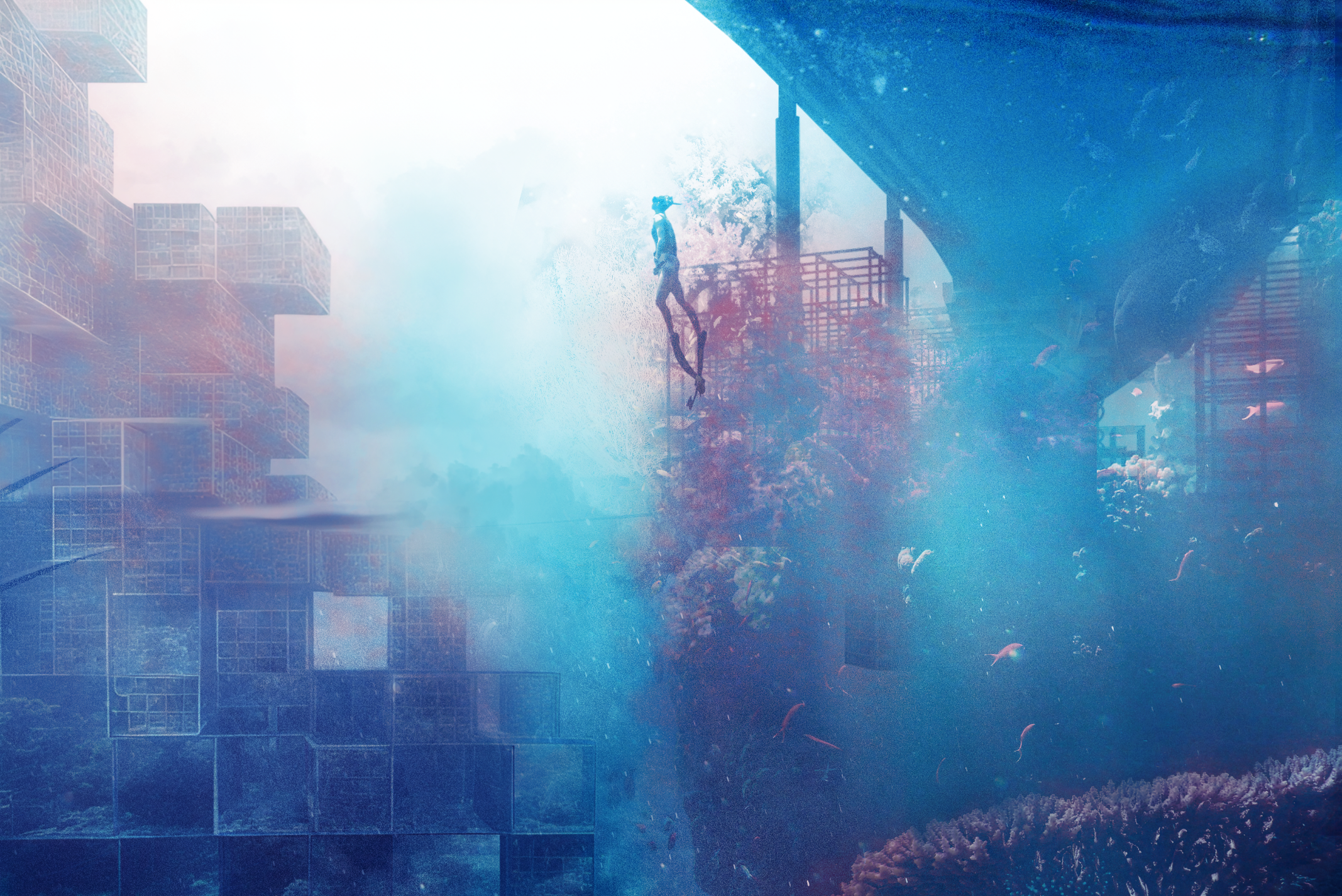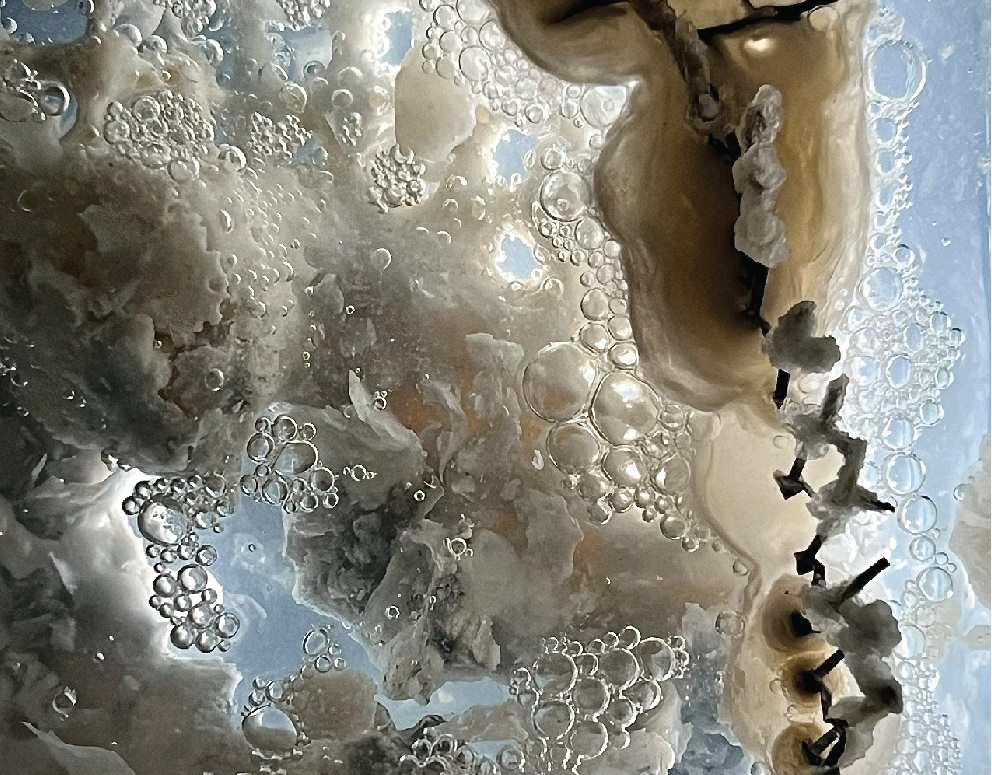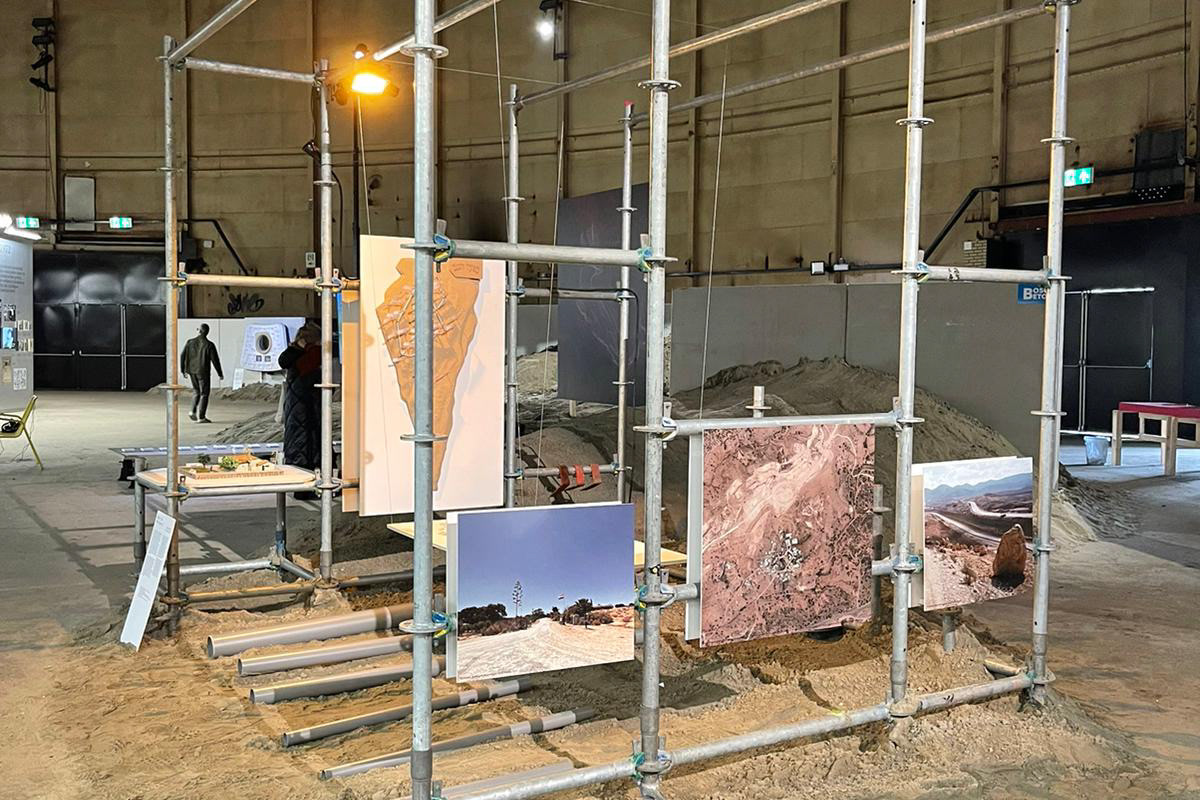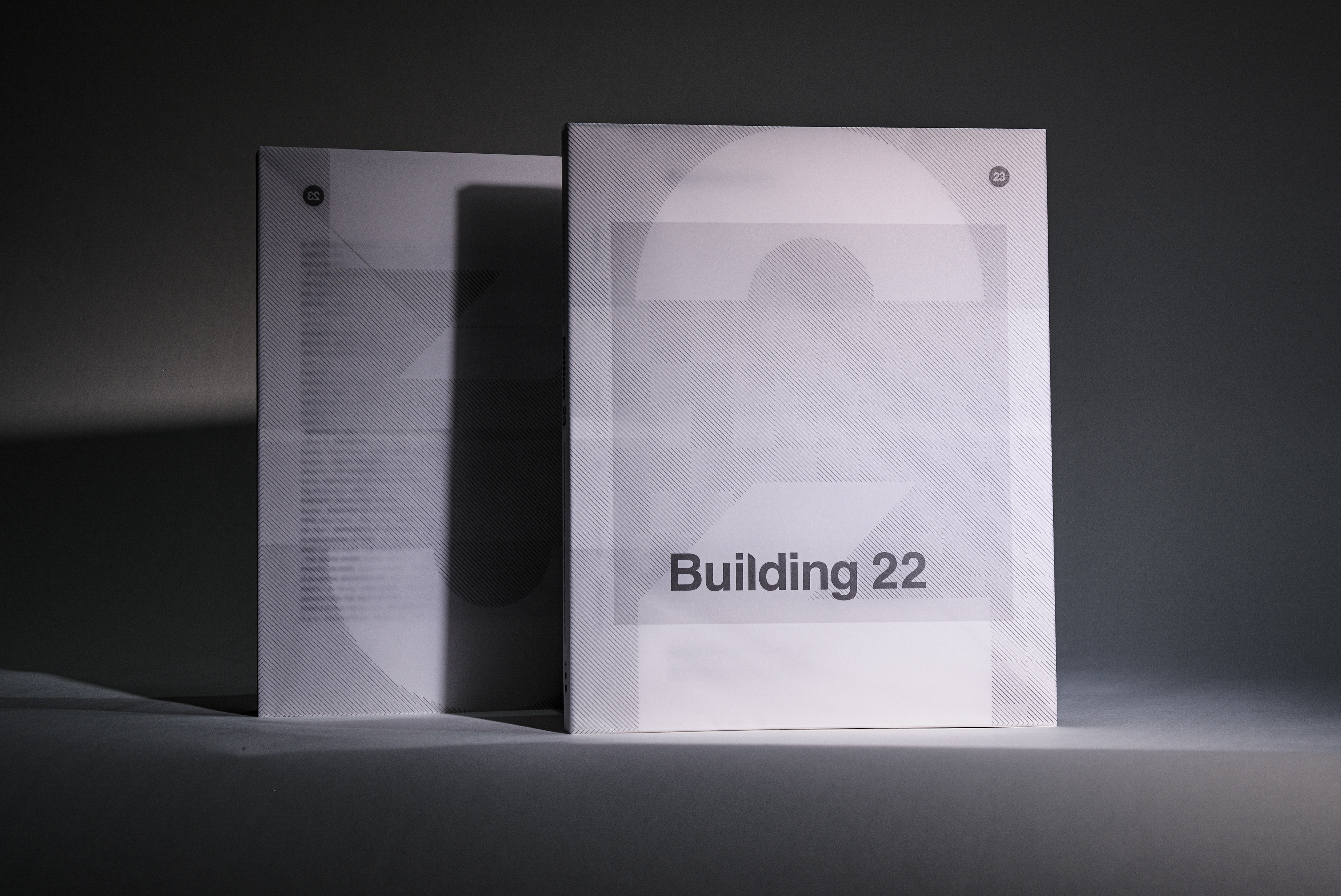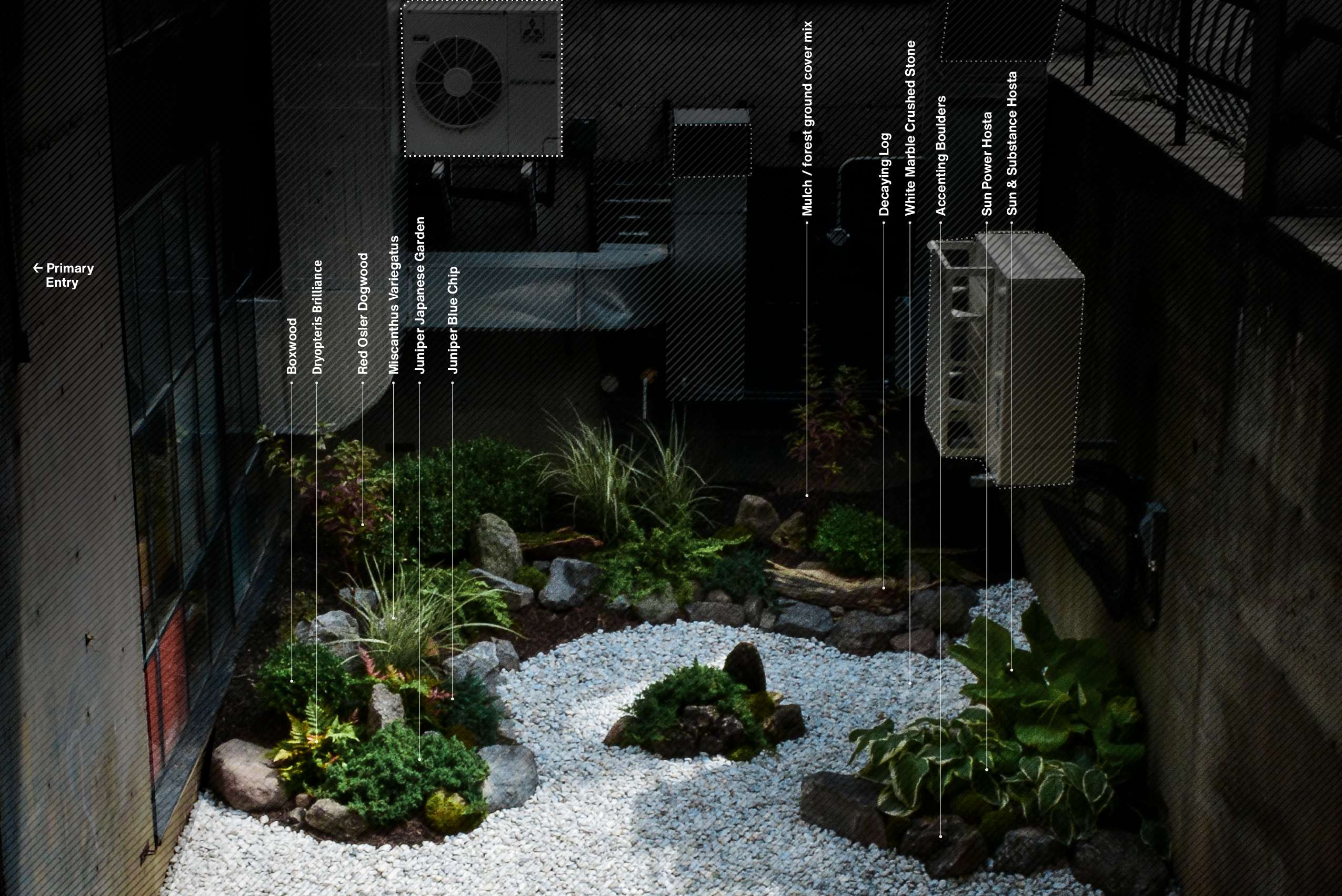An urban forestry research centre that applies native tree species into urban microclimates to increase areas of low ecological function. The building welcomes researchers, school children, and the public.
The interstitial site has a complex history of anthropogenic and natural disturbances from logging and vacancy. As a result, developing the site into a productive tree nursery, park, and research center was the primary objective.
Suggested Plantings: Quercus alba, White Oak; Thuja occidentalis, Eastern White Cedar; Populus tremuloides, Trembling Aspen; Picea mariana, Black Spruce; Tsuga canadensis, Eastern Hemlock; Abies balsamea, Balsam Fir; Pinus banksiana, Jack Pine; Acer pensylvanicum, Striped Maple; Acer saccharum, Sugar Maple; Pinus strobus, White Pine; Cornus florida, Dog Wood; Acer rubrum, Red Maple; Betula papyrifera, White Birch


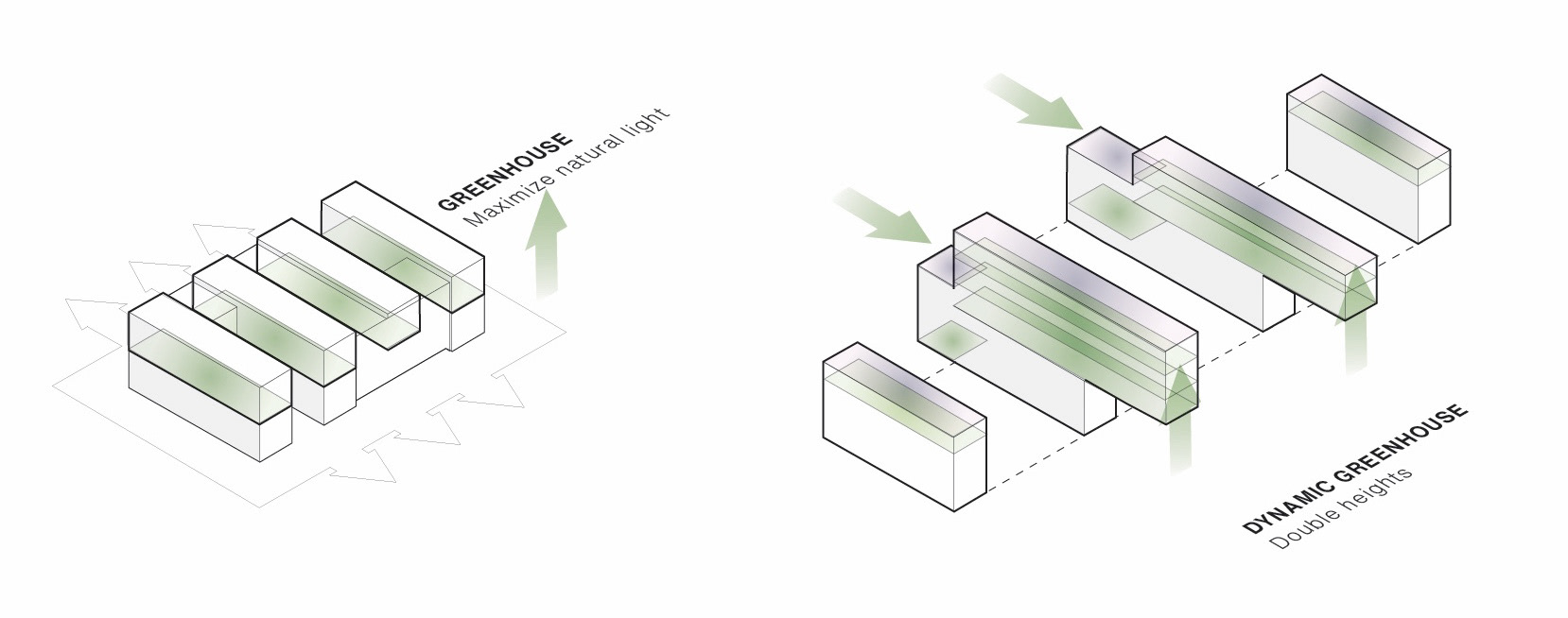
To maximize tree production, the site was divided into simulated ecoregions for the success of 13 selected tree species. The building was designed with a timeless design approach consisting of greenhouses and public gathering spaces and heavily relies on sustainable materials and energy systems.
Above: Typical Building Bay through North-South
Below: Grade, street entry
Above: Landscape Perspective — Southwestern park entry with landscaping strategy and urban context.
Below: Typical Wall Detail

